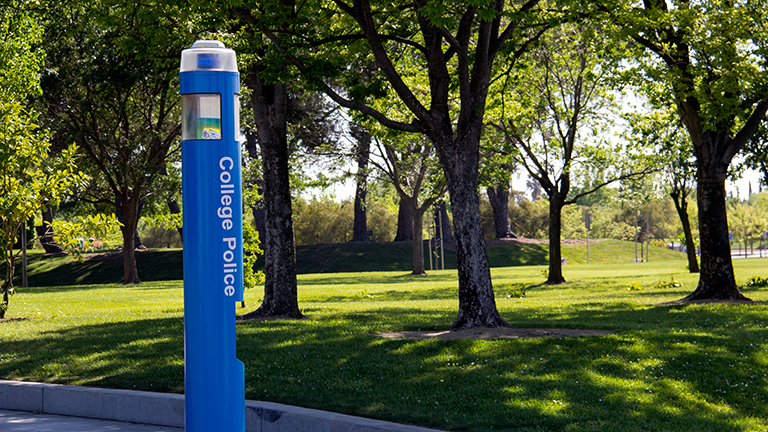In security
What security measures are colleges taking?
As high school safety continues to be a large topic around the country, soon-to-be-graduates might think of how that security will change once they leave high school to attend a post-secondary school. How safe will their future home and school be, and what kind of security will be in place?
Many college campuses utilize the blue-light system. This system places emergency telephones, indicated by a blue light, around campus, that any student is free to use if they feel unsafe or see something suspicious. The telephone call is then dispatched to campus security.
Campus police are by the side of the caller shortly after the call. This even instills a sense of safety for students without the outright use of them.
However, some schools have found other ways to keep security under control without the of the blue light system.
Freedom Alumna and current Waynesburg University student Michelle Keith said, “Waynesburg is staffed 24/7 with at least one security officer. They have a security office and there is phone outside the office that automatically dials the on-duty officers phone if you happen to stop by and no one is in the office,” she said. ”At freshman orientation, every student is encouraged to put campus security’s phone number in their phone. Which is super helpful when you need let into a building or if I happen to see something suspicious.”
Many campuses have campus police, like Penn State University, Drexel University and others.
However, some students feel safer when owning or possessing self defense items, such as pepper spray, an alarm, tasers, stun guns or similar items. These items allow a victim to non-permanently stun their attacker, if or before being attacked, or allow a sense of safety in places when the owner of the self-defense weapon is alone.
“Pepper spray is really just another form of protection. If someone feels that they can’t protect themselves, sometimes it’s just the thought of having that extra way of protection that’s enough to give them a peace of mind,” senior and pepper spray owner Kayla Eaton said.
Gallup management consulting company found that 14 percent of Americans own some form of pepper spray; however, due to higher campus security measures, as students get more comfortable living on campus, the use and/or carrying of pepper spray declined.
“My dad made me carry pepper spray my first semester of college, but I really didn’t see a need for it and it now stays in a draw in my desk,” Keith said. “[The] campus is very well lit with light posts throughout the common areas and by the female dorms in the upper part of campus.”



